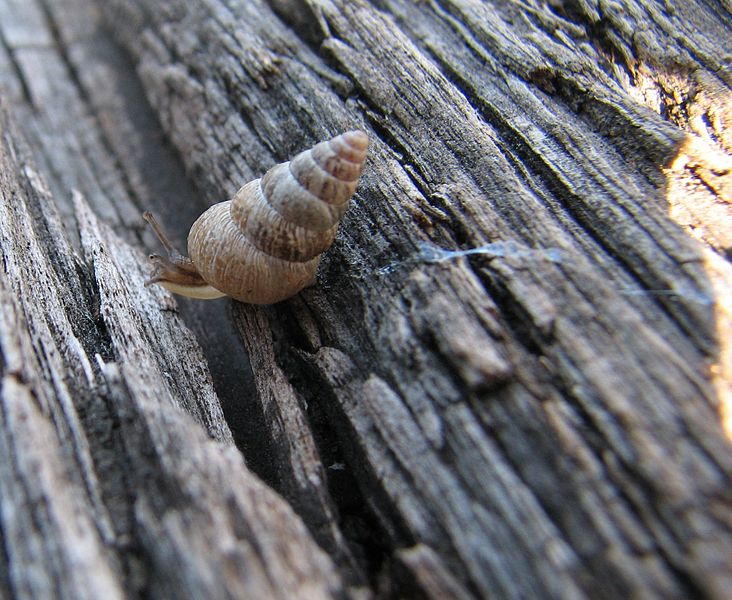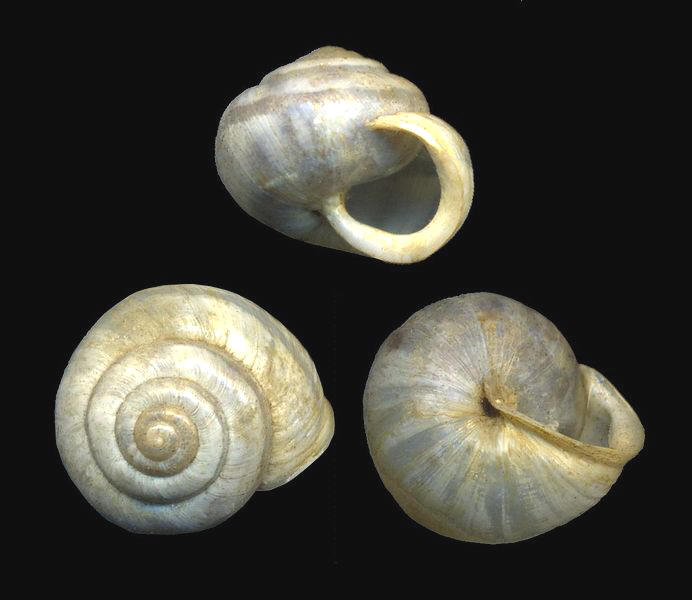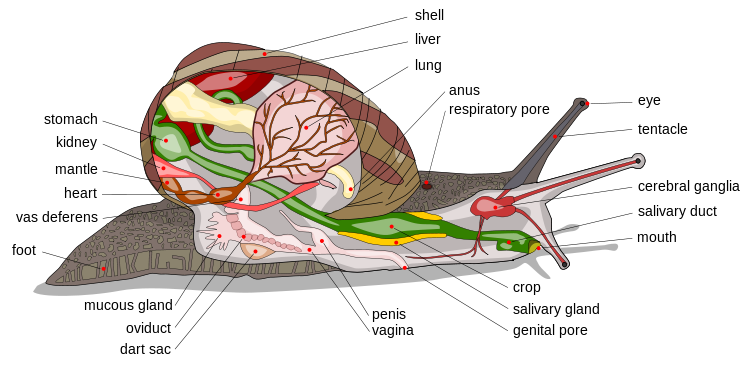Polygyridae and Praticolella candida
Form and Function
One of the hallmark traits of a snail is the "slime trail" that it
leaves behind. This trail has been identified to serve three large
purposes. One function is locating prey; snails
 that
feed on other snails use the trail left behind by its prey as a means of
finding them
(Ng et. al. 2013).
A predator can sense the type of prey depending on the level and type of
nutrients left behind on the trail
(Ng et. al. 2013).
Another way a predator can track specific prey is through the particular
chemicals left behind on the trails
(Ng et. al. 2013). The second function of the
"slime trail" is that it is used as an energy source
(Ng et. al. 2013).
There is evidence that the trail traps nutrients and then becomes a
viable food source
(Ng et. al. 2013).
The mucus of the trail contains a variety of nutrients such as high
levels of proteins and complex sugars
(Ng et. al. 2013). The
slime trail also functions as a suctioning device for Polygyridae and
snails in general. It allows them to move upside down and vertically
(Snail-World
2013).
that
feed on other snails use the trail left behind by its prey as a means of
finding them
(Ng et. al. 2013).
A predator can sense the type of prey depending on the level and type of
nutrients left behind on the trail
(Ng et. al. 2013).
Another way a predator can track specific prey is through the particular
chemicals left behind on the trails
(Ng et. al. 2013). The second function of the
"slime trail" is that it is used as an energy source
(Ng et. al. 2013).
There is evidence that the trail traps nutrients and then becomes a
viable food source
(Ng et. al. 2013).
The mucus of the trail contains a variety of nutrients such as high
levels of proteins and complex sugars
(Ng et. al. 2013). The
slime trail also functions as a suctioning device for Polygyridae and
snails in general. It allows them to move upside down and vertically
(Snail-World
2013).
The slime that's produced is secreted by a gland in the muscular foot of Polygyridae (Snail-World 2013). The foot is also used to get from place to place, although not too quickly! The force of the muscular contractions within the foot pull the snail forward (Snail-World 2013). In combination with the slime, this action is done much more easily (Snail-World 2013). The slime produced by the foot also protects the soft-bodied snail from the, potentially, rough terrain it lives on (Snail-World 2013).
Another large part of the form and function of Polygyridae is its
shell. The shell is comprised of calcium-carbonate and is maintained
through the considerable amount of calcium in the snails diet
(Snail-World
2013). The shells appearance varies widely across the different taxa of
land snails. As seen in the picture in the bottom right, the genus Praticolella's
shell is a smaller, cream-colored shell. However, the shell varies more
between species in the Praticolella genus. It's the snails
first line of self defense, as well. It's able to tuck its entire body
away in its shell when it fears predation
(Snail-World 2013). Not only
the shell a mechanism of defense against predators, it's also used to
protect itself from the harsh environmental conditions that come its
way. In the hot, cold, and dry weather Polygyridae will sit
inside of its shell to keep from drying out
(Snail-World 2013).
For more information about Polygyridae form and function please visit
www.snail-world.com!
shell a mechanism of defense against predators, it's also used to
protect itself from the harsh environmental conditions that come its
way. In the hot, cold, and dry weather Polygyridae will sit
inside of its shell to keep from drying out
(Snail-World 2013).
For more information about Polygyridae form and function please visit
www.snail-world.com!
Go back to Homepage. Click here to learn all about nutrition!
